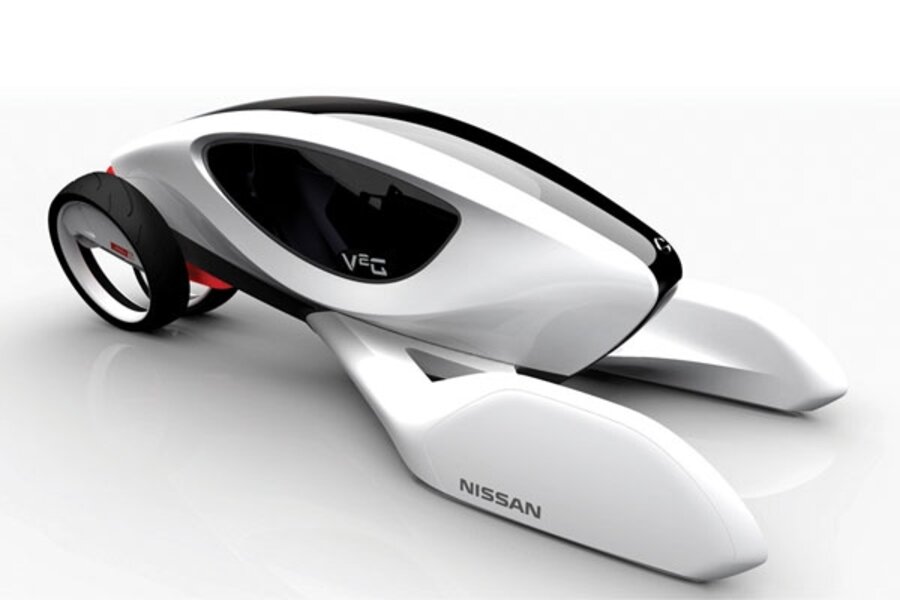Three good green reads – futuristic cars, solar power from space, and wind power from on high
Loading...
Futurists have been promising Jetson-style cars for America's near future since some of us were kids back in the Dark Ages. They're still doing it -- and Americans are still buying into it, although possibly with less and less hope that these awesome vehicles might actually become reality.
Of the "6 Amazing Cars From the Future" to be introduced at this year's LA Auto Show, most are for drooling over by game players. But two have taken the environment into consideration -- which is probably going to be a necessity in 2030, the year the cars are designed for.
Nissan Design America V2G [pdf] -- an electric car -- is designed to be the "eco-neutral commuter car for 2030."
The Toyota LINK is aimed at students, with the idea that this one-person customizable vehicle could replace mass transit. Its wheels will be "made of an electro-conductive material, convert friction into energy that recharges the batteries."
Currently under wraps is the list of hybrid and alternative fuel vehicles that might be closer to production. But the "green car of the year" will be announced on Dec. 3.
Electricity from a space station?
Also in the realm of science fiction -- at least for the moment -- is the idea of space stations beaming down solar energy to Earth. Both Japan and the United States are working on this idea.
Here's how Care2 explains it:
There are three parts to the solar space station:
1. solar cells or heat engines to collect energy
2. microwave or lasers to transmit energy to earth
3. rectennas (rectifying antennas) to collect the energy and distribute the energy on earth.
Most of the countries have opted for photovoltaic cells in order to collect the energy from the sun. One of the greatest advantages of having these cells out in space is that they can collect energy all the time.
High-altitude wind power
"Man’s search for renewable power is about to take to the skies," says the Times of London, which explains:
Companies and inventors are casting their hopes — and millions of dollars — upwards as they seek to exploit the strong, steady winds circling the planet at higher altitudes.
High-altitude wind power — essentially putting wind turbines in the air — received a recent boost when half a dozen companies and other entrepreneurs met at a conference in northern California to discuss how to get their businesses off the ground.
How many of these ideas do you think will become reality by 2030, or even 2050?
Editor’s note: For more articles about the environment, see the Monitor’s main environment page, which offers information on many environment topics. Also, check out our Bright Green blog archive and our RSS feed.





